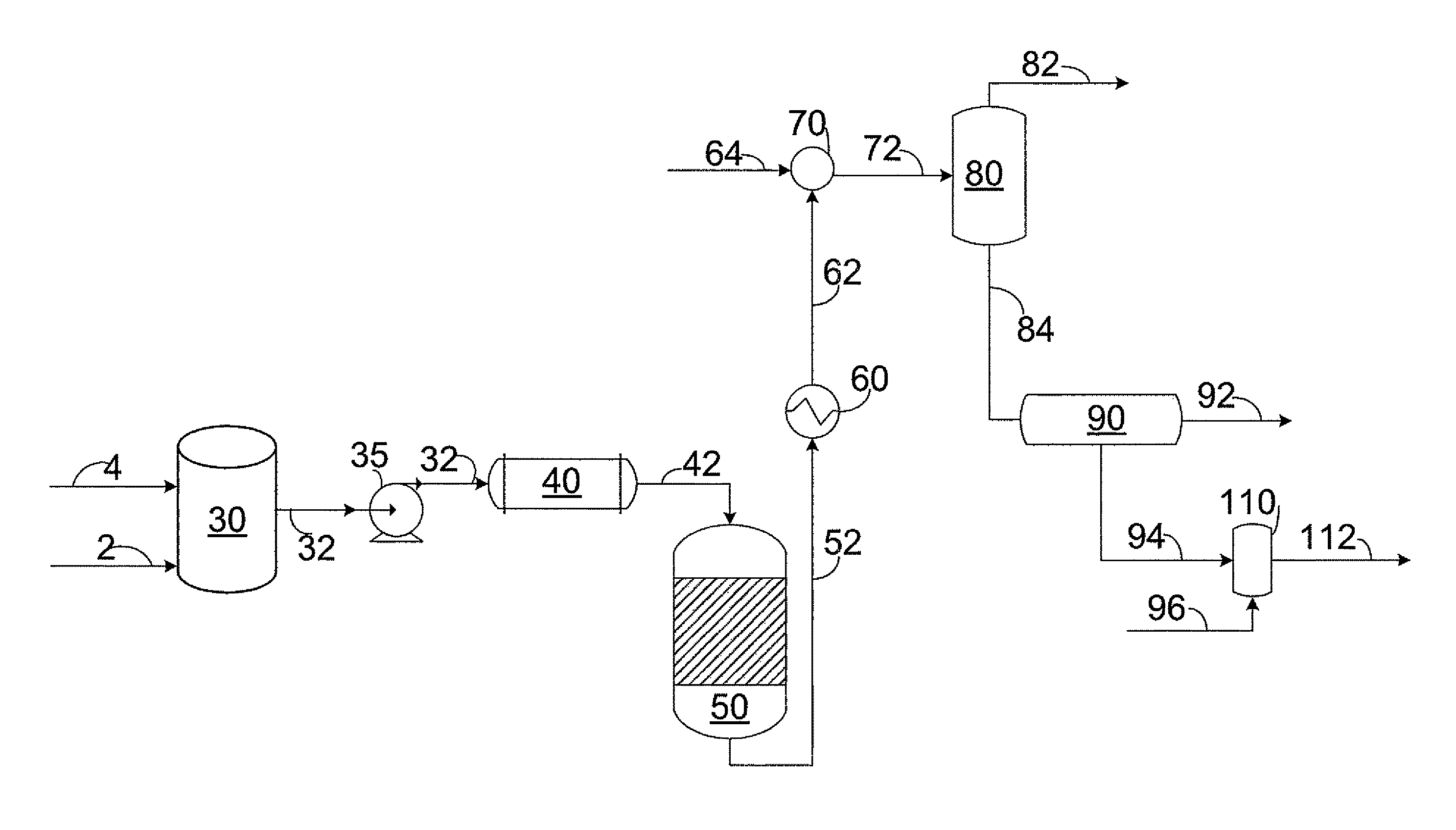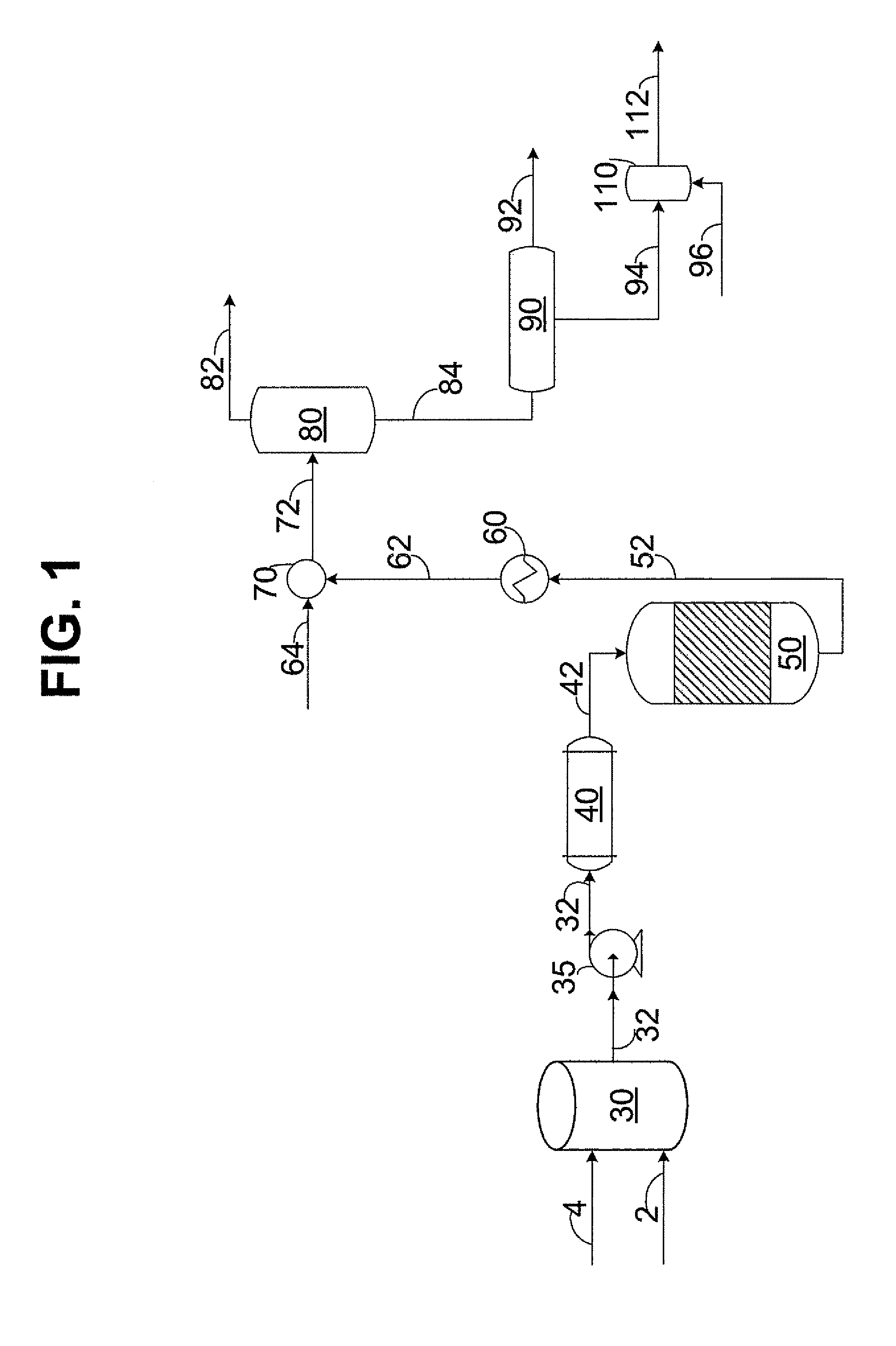Removal of sulfur compounds from petroleum stream
a technology of petroleum stream and sulfur compound, which is applied in the direction of physical/chemical process catalyst, refining by water treatment, and heavy oil refining methods, can solve the problems of not adjusting for the expected increase in future demand, reducing the efficiency of heavy oil refining, and difficult to refine heavy oil by conventional refining processes to produce end petroleum products with specifications. , to achieve the effect of increasing api gravity and reducing asphalten
- Summary
- Abstract
- Description
- Claims
- Application Information
AI Technical Summary
Benefits of technology
Problems solved by technology
Method used
Image
Examples
Embodiment Construction
[0033]While the invention will be described in connection with several embodiments, it will be understood that it is not intended to limit the invention to those embodiments. On the contrary, it is intended to cover all the alternatives, modifications and equivalence as may be included within the spirit and scope of the invention defined by the appended claims.
[0034]Referring to FIG. 1, water stream 2 and hydrocarbon stream 4 are combined in mixing zone 30 to create the reaction mixture. The reaction mixture is transferred through line 32 using high pressure pump 35 to raise the pressure of the reaction mixture to exceed the critical pressure of water. In an embodiment not shown, water stream 2 and hydrocarbon stream 4 can be individually pressurized and / or individually heated prior to combining. Exemplary pressures include 22.06 MPa to 30 MPa, preferably 24 MPa to 26 MPa. In one embodiment, the volumetric flow rate of hydrocarbon stream 4 to water stream 2 at standard conditions is...
PUM
| Property | Measurement | Unit |
|---|---|---|
| temperature | aaaaa | aaaaa |
| temperature | aaaaa | aaaaa |
| temperature | aaaaa | aaaaa |
Abstract
Description
Claims
Application Information
 Login to View More
Login to View More - R&D
- Intellectual Property
- Life Sciences
- Materials
- Tech Scout
- Unparalleled Data Quality
- Higher Quality Content
- 60% Fewer Hallucinations
Browse by: Latest US Patents, China's latest patents, Technical Efficacy Thesaurus, Application Domain, Technology Topic, Popular Technical Reports.
© 2025 PatSnap. All rights reserved.Legal|Privacy policy|Modern Slavery Act Transparency Statement|Sitemap|About US| Contact US: help@patsnap.com



